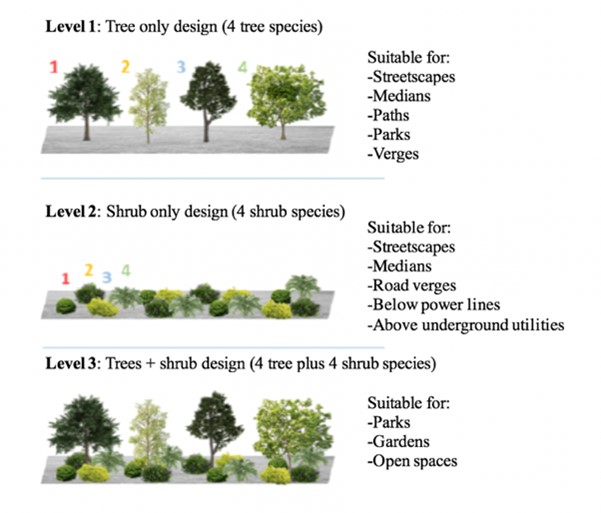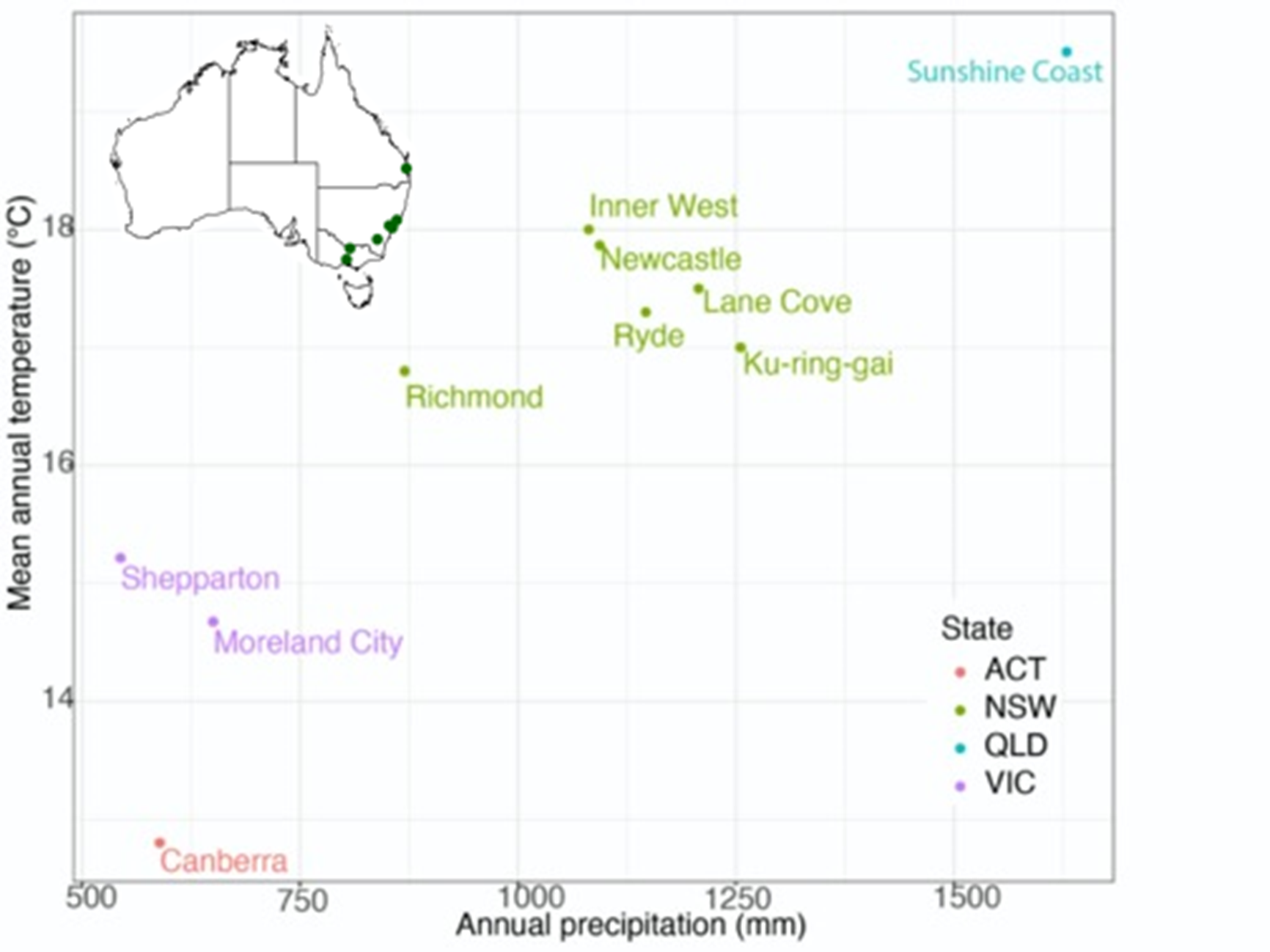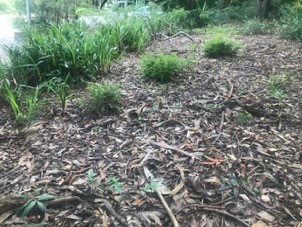Authors: Paul Rymer and Manuel Esperon-Rodriquez, 14th December 2021
How to set up a living lab and why?
A living lab is a valuable space for research innovation and, depending on its set up, can address multiple research questions. Networks of living labs can also be designed to test hypotheses across different locations, including those relating to contrasting climates and soil types. Living labs offer the benefits of being set up in real-world situations, where plant performance is monitored in its local environment and emergent data are interpreted by experts.
To establish a living lab, it is necessary to:
- Identify potential participants.
- Adopt robust protocols to guide site preparation, planting and maintenance activities.
- Engage collaborators and secure sites.
- Undertake regular monitoring and evaluation.
The WPW Living Lab
The Which Plant Where (WPW) Living Lab, is a new network of urban planting sites established as part of the Which Plant Where research program, funded by Hort Innovation Australia. The WPW Living Lab involves the establishment and monitoring of new urban planting sites to assess plant performance across a wide range of environmental conditions and to evaluate the associated environmental benefits that underpin healthy urban environments.
Initiated in 2018 in a partnership between Western Sydney University and Macquarie University, the WPW Living Lab is an exemplary model of collaboration across local government and industry partners. The WPW Living Lab comprises a standardised set of tree and shrub plantings that are considered suitable for urban areas throughout Australia. The objectives of the Living Lab are to: 1) test the performance of species with different morphologies and growth forms under a wide range of environmental conditions; and 2) evaluate the co-benefits of urban greening (e.g. heat mitigation, enhanced biodiversity) by examining the role of vegetation structure and diversity.
The network plantings represent an ecological palette of tree and shrub species, planted on their own and in combination. The WPW Living Lab has three levels of network participation: (1) Trees only, with standardized plantings comprising four tree species. One individual of each species, replicated four times, is the minimum requirement for participation at this level (i.e. 16 trees in total); (2) Shrubs only, standardised plantings comprising four shrub species; and (3) Trees + Shrubs, a mixture of four different tree species, each planted with four different shrub species alongside, to provide greater structural complexity of the planting.

Fig 1. The WPW Living Lab has three levels of participation suitable for different urban settings.
The network
The WPW Living Lab currently has 10 sites in four states, covering a temperature and precipitation gradient across Australia, from the warmer and wetter site in the Sunshine Coast, to the cooler and drier site in Canberra. To learn more about the sites, please read our blog post ‘Which Plant Where Living Lab Sites’.

Fig 2. Ten WPW Living Labs have been established in a temperature and precipitation gradient in Australia. Insert map shows the location of the sites.
These sites each record data on plant growth and performance, including failures. Data collection includes height, canopy width, diameter, health category and evidence of heat stress.
What we have learnt so far
The WPW Living Lab network of sites allows us to record growth rates, evidence of stressors that affect performance and also data on failures, assessed as the number of dead or missing trees or shrubs across a wide range of environmental conditions. For these newly planted sites, we recommend repeated and systematic monitoring of plant growth and canopy condition to assess growth rates, changes in health and leaf damage.
The WPW Living Lab network sites allowed us to record performance and failures. In these sites, failures were assessed as the number of dead or missing trees. Failures were recorded as plant replacements in all sites during the early establishment phase (<1 year) and appeared to be linked to inadequate planting technique or poor nursery material. We found that planting context plays a key role in determining the success and failure of an individual tree. For example, when we compare individuals from Sydney’s Inner West Living Lab planted in a park versus in a street.


Fig 3. Comparison of growth and performance of trees in different urban settings: park (top) and street (bottom).
Besides planting context, we also observed that planting location (especially in relation to sun exposure) is crucial for the success or failure of an individual tree or shrub. For example, the WPW Living Lab @ TAFE Ryde was located across four sites within the campus, two in open areas and two in shaded areas. We found that shrubs planted in open areas had a significantly greater increase in average height compared to shrubs planted in shaded areas. We also found 12 dead or missing shrubs (out of a total of 32 planted shrubs), in shaded areas, whereas we only found one shrub missing in an open area at TAFE Ryde.


Fig 4. Comparison of growth and performance of shrubs under different exposure conditions: open area (top) and shade (bottom).
WPW Living Lab at Western Sydney University Hawkesbury campus was established with all three planting levels: trees only, shrubs only, and trees and shrubs planted together. While this site was established with drip irrigation, the 2018-2020 period had extreme drought and heatwave events, testing the species’ ability to survive and thrive.

Fig 5. WPW Living Lab at Western Sydney University with three levels of participation.
We highlight the importance of collaboration among participants to share and compare findings in order to identify factors that positively and negatively affect performance. This can aid in the identification of species that perform well across different locations and are resilient under different climates and in contrasting soils.

